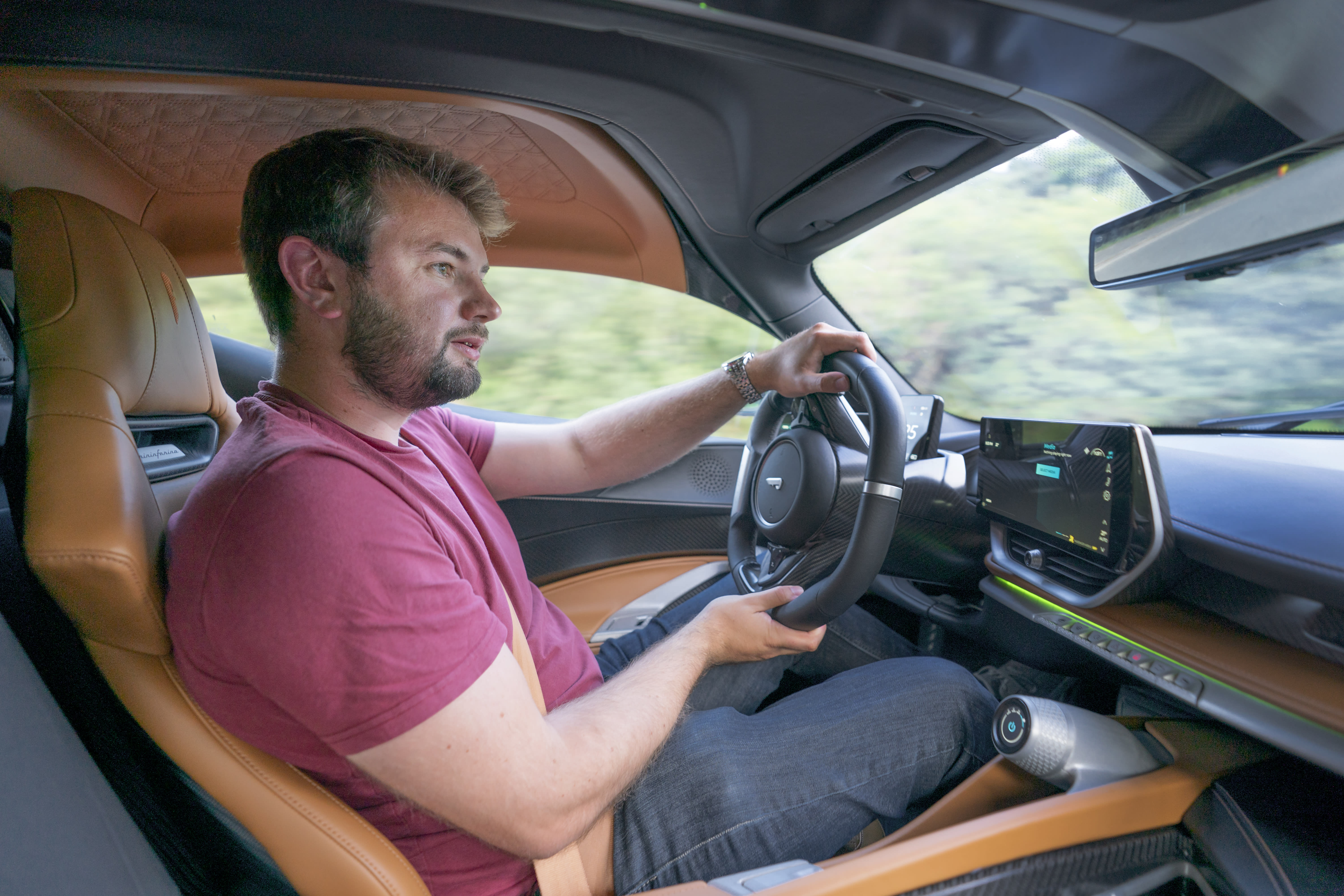
Volkswagen Touareg (2024-) Review

Introduction
The Volkswagen Touareg has become a family name over the years, having started out more than two decades ago. Now it’s part of the furniture, but it’s competing with increasingly upmarket rivals. After all, the rise of leasing has allowed the likes of the Audi Q7 and BMW X5 to become competitively priced. Yet the Touareg still soldiers on, providing a kind of understated cool alternative to the somewhat more well known establishment.
But to ensure the car remains a contender, VW has given it a few updates. New lights at the front and rear are key changes, along with a few other aesthetic upgrades. There’s some fresh interior technology, too, and an improvement in cabin quality, all of which should help keep the Touareg feeling competitive — at least on paper. But the question is, has it all worked?
Select's rating score* - 3.5 / 5
At a Glance
The Touareg is big and bulky, but Volkswagen has given it some bold styling to match. The big grille looks quite imposing – although the Black Edition’s black trim gives it a slightly unglamorous image – and the car generally manages to tread the tightrope between muscularity and luxury. The new lights, especially at the back, give a high-tech twist to the style, too, and the light-up rear badge is a neat feature that’s a first for the Touareg.
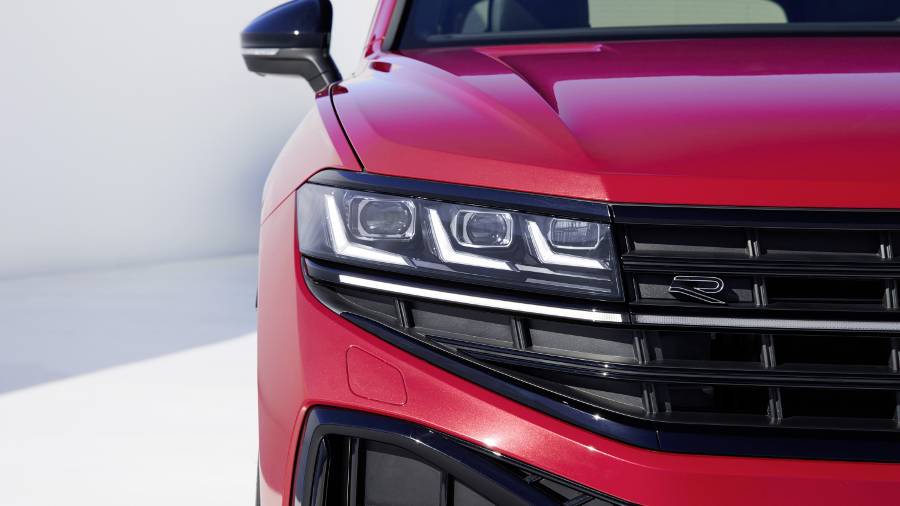
Inside, the tech is a big part of the car’s appeal, with a huge central touchscreen and a great digital instrument display, but the amount of space will surely be a priority for customers, too. The boot is massive, and though there’s no sixth or seventh seat, the amount of space in the cabin is ample. The quality on show in there is first-rate, too, and plenty of premium models can’t compete with the Touareg on that front.
Nor can some compete with the breadth of powertrains Touareg customers can choose from. With petrol, diesel and plug-in hybrid choices on offer, the Touareg offers something for everyone in terms of performance and economy. It’s a capable 4x4, too, and it can tow pretty well, particularly in diesel form.
That said, it isn’t the sportiest SUV on the market, which is a shame given it shares a parent company with the Audi Q7 and Q8, and the Porsche Cayenne. But it’s stable, secure and safe, which are ideal traits in a family SUV, and it’s very well suited to long road journeys, where the efficient engines and air suspension make it a relaxing place to while away the miles. Numb steering and immense bulk, however, prevent it from being the ideal car on winding roads.
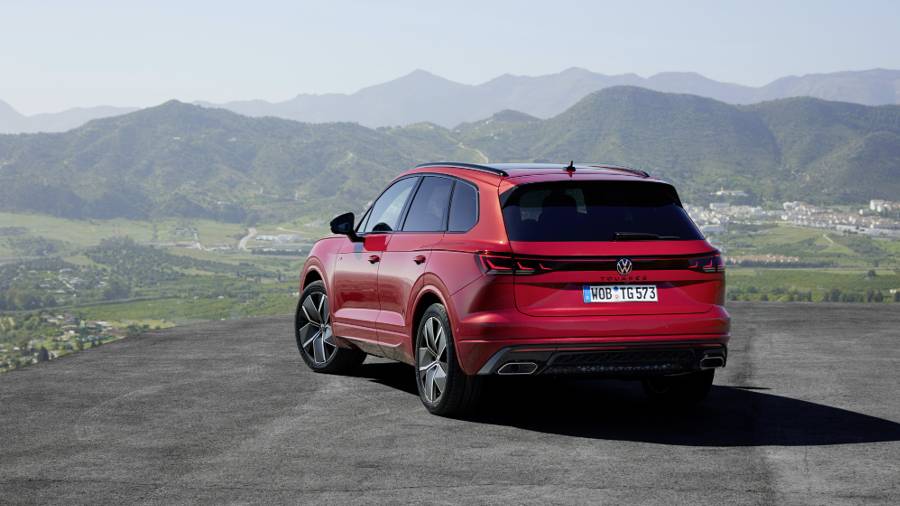
Key Features
Among the key draws of the Touareg is the immense amount of space inside the big Volkswagen. It may not have quite as posh a badge as some of the established luxury SUVs, but it certainly has space, with its massive 810-litre boot. Admittedly, that size only applies to petrol and diesel versions of the Touareg, but even the 655-litre space you’ll find in the back of the eHybrid is bigger than you’ll find in most equivalent hybrid SUVs.
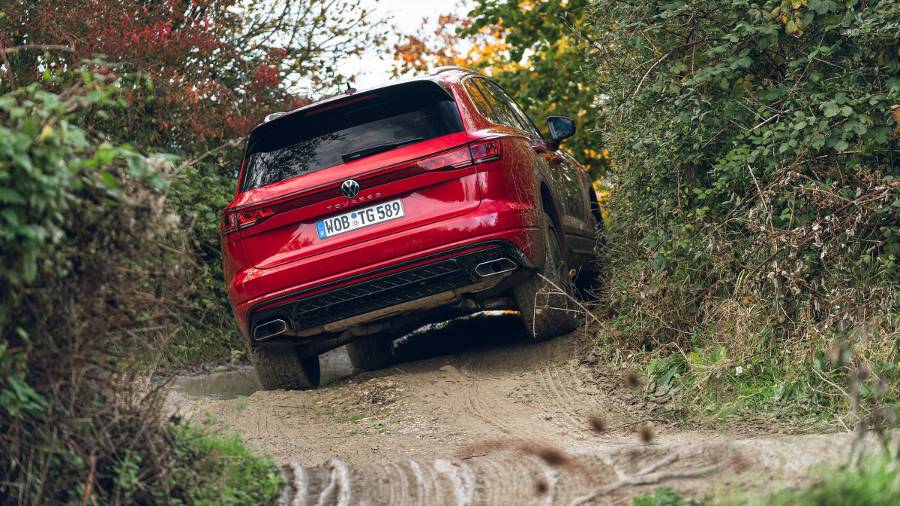
And all these figures only apply to the space behind the second row of seats and below the window line. If you stick with the diesel, then fold down the back seats and fill the car to the rafters, you’ll have 1,800 litres of stuff back there. Admittedly, the small fly in the ointment is the lack of a third row of seats, which might put some customers off, but for those who prefer space to seats, the Touareg will be a popular choice.
Not least because of its wide range of engines on offer. Two diesels cater for those who travel long distances or tow, while a powerful petrol engine offers refinement and smoothness at the expense of economy. And there’s a choice of two plug-in hybrid options – one more performance-orientated than the other – for company car drivers or those who keep most of their journeys fairly short. That choice will appeal to many, but for us, the biggest attraction of the Touareg is its relative lack of image. It’s not that anyone will think it’s a cheap and nasty option – it’s clearly a premium product – but it doesn’t get the negative attention of an Audi or a BMW, and that will appeal to those who like luxury, but also like to fly under the radar.
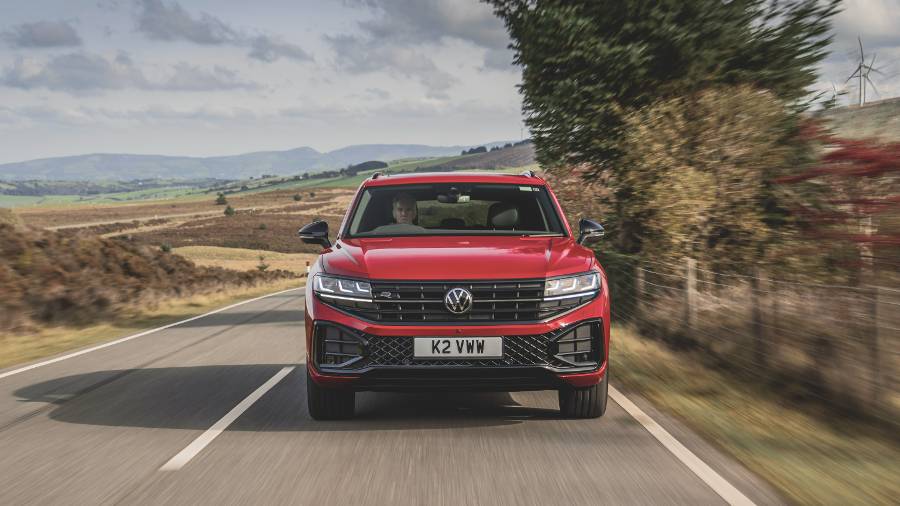
Range & Batteries
Both plug-in hybrid versions of the Touareg – the Elegance and the R – come with a 14.3kWh battery pack that can be recharged as it would be in a fully electric vehicle. However, because the battery is relatively small and the Touareg is not, the official range is 31 miles, and most customers will manage something in the 20s. Still, that should be enough for those in suburban environments to do the school run, get to the shops, or even do the commute. And when the range is exhausted, they can leave the petrol engine to do the work, or charge the batteries at home.
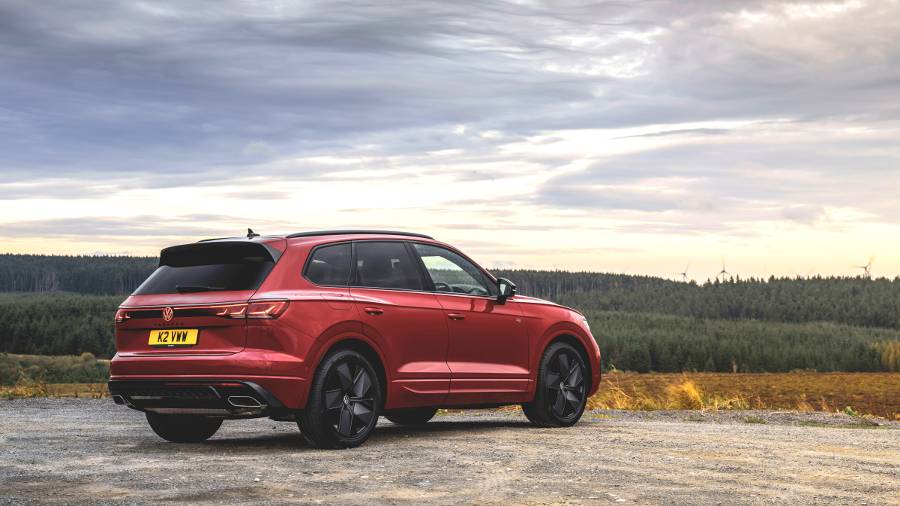
Performance & Drive
The Touareg comes with a choice of five different powertrains, with the two 3.0-litre diesels expected to take the lion’s share of sales. Available in two forms — the 231hp base model and the mid-range 286hp version — it offers a compelling combination of fuel economy and performance. With the power heading to all four wheels via an eight-speed automatic gearbox, even the least powerful examples are capable of 0-62mph in 7.7 seconds and a top speed of 138mph. Opt for the 286hp option and those figures change to 6.4 seconds and 147mph.
But if diesel isn’t for you for any reason whatsoever, there’s always the 3.0-litre V6 petrol engine, which is quite the beast. At 340hp, it provides more than sufficient power, and it has the same gearbox and all-wheel-drive system as the diesels. Add in the fact it’s slightly lighter, and you’ve got an engine capable of taking you from 0-62mph in 6.1 seconds and on to a top speed of 155mph.
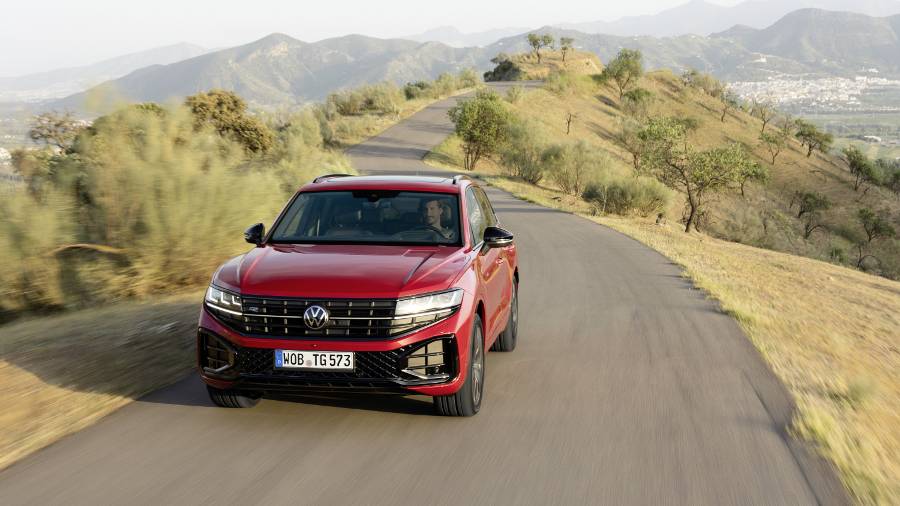
Or there are the two plug-in hybrid models, both of which use a 3.0-litre V6 petrol engine and a 136hp electric motor to drive all four wheels. The basic option gets 381hp, which is enough for a 5.9-second sprint to 62mph and a 155mph top speed, while the more powerful version offered in the R model comes with 462hp and cuts the 0-62mph time by seven tenths of a second. In truth, though, it doesn’t feel as fast as it claims to be, and though it’s a refined engine, it isn’t as well suited to the Touareg as the diesels. Certainly, it doesn’t feel special enough to be a high-performance option.
Which leaves us with the less potent hybrid, and the diesel and petrol engines. Yes, the petrol engine is powerful and smooth, and the hybrid will suit those who keep most of their journeys short, but the diesels are better suited to the car, giving you plenty of grunt and never needing to work too hard, which makes for a more relaxing experience. And you don’t have to watch the fuel readout tumble as you drive, as you would in the petrol.
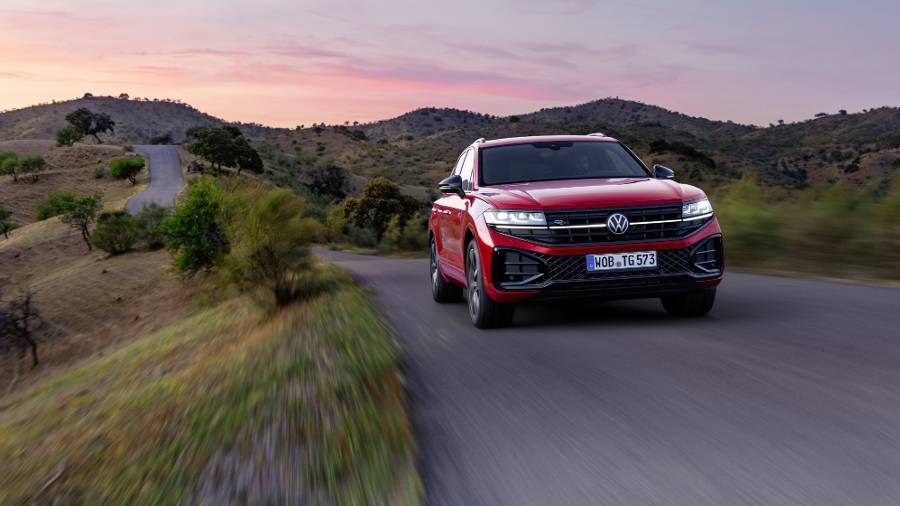
All of which suits the Touareg down to the ground. It’s a big, bulky car, and it makes no great effort to hide that. You get air suspension as standard on all but the basic Elegance model, and that makes the Touareg quite comfortable over most surfaces, and allows it to feel like a relaxed and wafty luxury bus. In short, it’s great over long distances.
But while the body is quite well controlled in corners — the Touareg doesn’t roll too much in the bends and it certainly doesn’t lurch about — and the car feels secure on the road, the handling is pretty inert. Numb steering ensures there isn’t much in the way of fun to be had, and the Touareg generally feels at its happiest in the cruise.
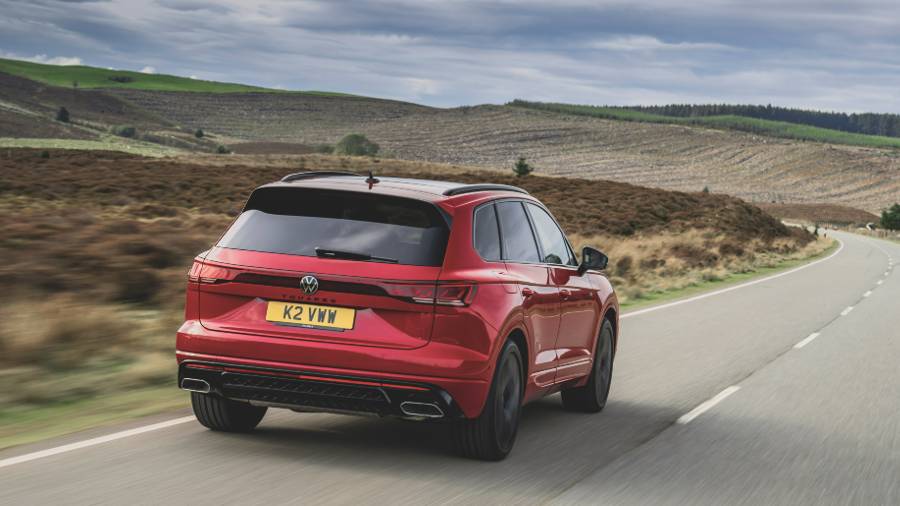
Charging
With such a small hybrid system battery, charging the Touareg shouldn’t take too long. Even with a three-pin domestic plug, the 14.3kWh battery can be filled in eight-and-a-half hours, while using a 7.2kWh ‘wallbox’ home charging unit will allow the battery to be filled in just two-and-a-half hours. There’s no fast-charging option for public chargers, but with such a small battery and the cost of using such charging points, there seems to be little point in using the fastest points.
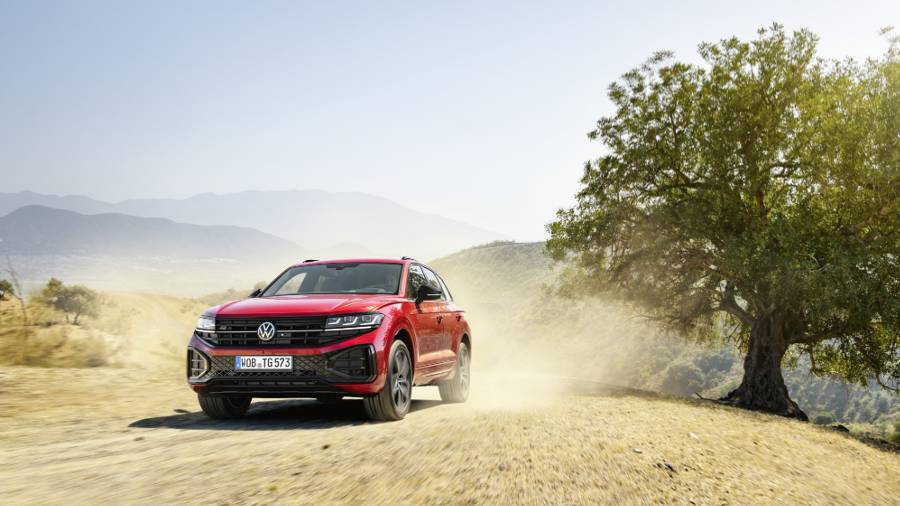
Running Costs & Emissions
With such a range of different engines available, Touareg customers can choose the version that suits their lifestyle best. For those doing lots of long journeys or towing, one of the two diesels will make the most sensible option, with their enormous grunt and more palatable economy figures. Whichever of the two you pick, you’ll get an official economy figure of more than 34mpg, which isn’t bad for such a massive SUV.
For those who mostly drive around town and only occasionally venture further afield, the plug-in hybrids are the best bet, and of those, the less powerful system fitted to Elegance models makes the most sense. Officially, it’ll return 126.2mpg – not that that ever means much in a plug-in hybrid – but those who charge regularly and only really drive short distances will notice a fuel saving.
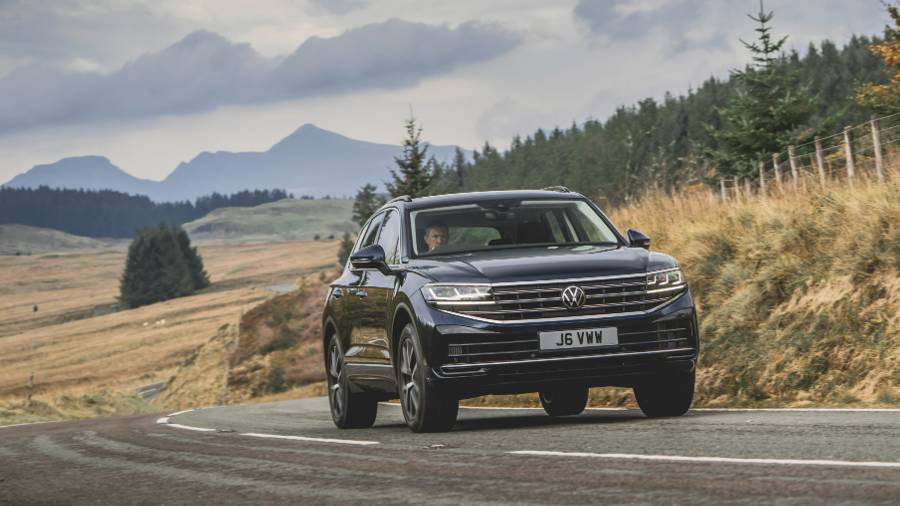
However, with CO2 emissions of 51g/km, the Touareg might not appeal so much to company car drivers, because emissions of 50g/km or lower would reduce the Touareg’s 2024-25 Benefit-in-Kind tax bracket from 15% to 12%. It shouldn’t make a massive monthly difference, but it seems a shame that VW couldn’t engineer just a 1g/km reduction in emissions for the UK market. Smaller wheels or different gearbox software might have done the trick.
The third option is the petrol engine, which occupies a strange no-man’s land in the range. Suited to neither short journeys nor long journeys, and promising economy of just 25.6mpg, it clearly isn’t the option for those who want to save money, and it feels like a sop to those who just rail against diesel power.
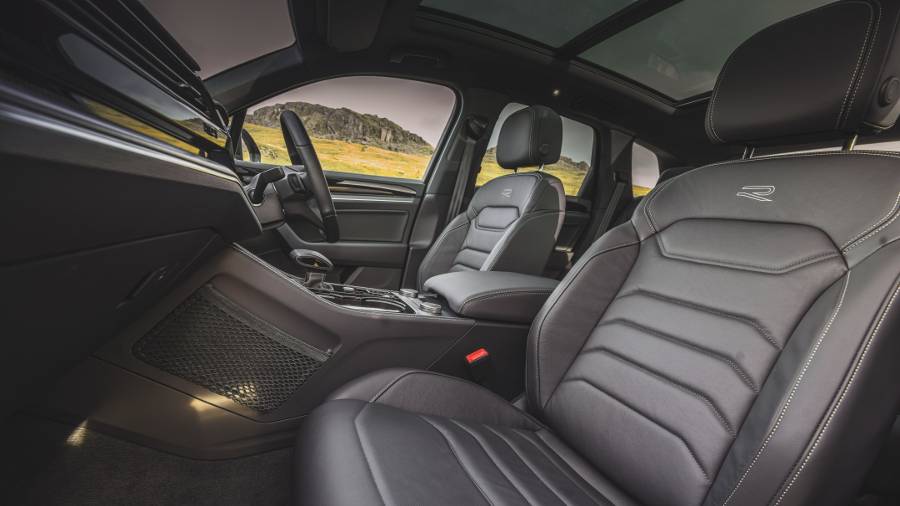
Interior & Technology
As you’d probably expect from Volkswagen (although the company has dropped the ball occasionally of late), the Touareg’s cabin is a monument to solidity and quality. Every material feels upmarket, every button feels robust and every panel fits perfectly alongside its neighbour. And while VW may not be the most premium brand in the marketplace, you won’t get anything that feels quite this ruggedly constructed from Volvo or Mercedes-Benz. To match this kind of quality, you’re talking about Audis and BMWs.
Admittedly, the design isn’t quite as premium as that of a Mercedes-Benz or a Volvo – the VW has some nice trim, but it’s generally dark and uninspiring – though there are some nice little features. The Touareg wording in the ambient lighting is a nice touch, and we quite like the chunky gear selector and the massive panoramic sunroof, which brings plenty of light to the party, but the cabin definitely lives and dies on its technology.
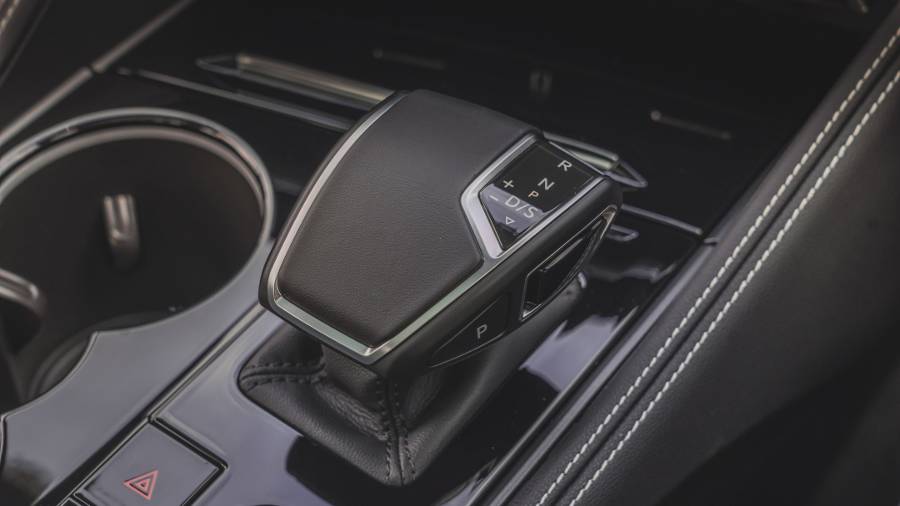
Not so long ago, that would have been bad news for VW. The company went through a sticky patch with its infotainment software, which was glitchy and tricky to use. Happily, the German company seems to be through the worst of it, so the Touareg gets a massive central touchscreen that’s quite clear and easy to use, although some of the menus take some getting used to. But it’s decent enough, and though the built-in climate control system is a bit irritating – we’d rather have conventional switches – there’s nothing too badly wrong with it.
The highlight is actually the digital instrument display, which is also massive, and comes with crystal clear displays. It isn’t quite as fancy as the system used in Audis, but it does everything it needs to do, and it can be paired with a head-up display for all the really vital information.
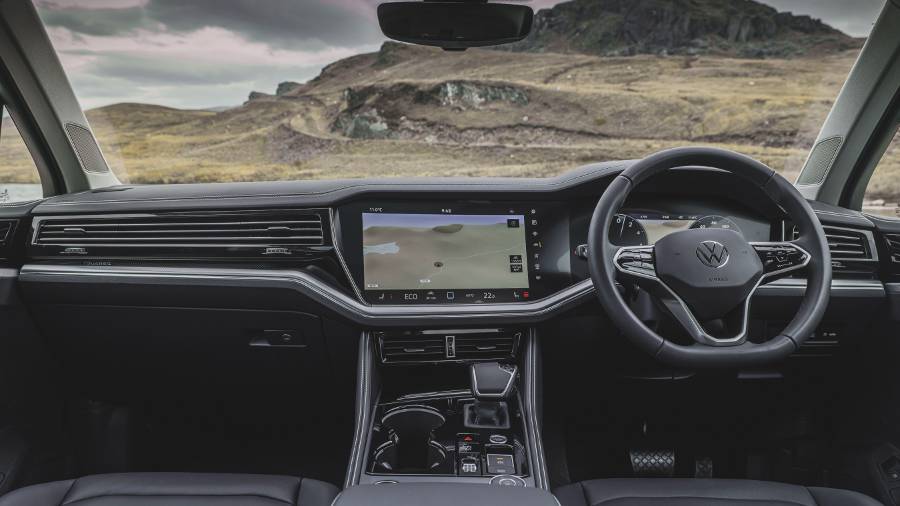
Practicality & Boot Space
Given the Touareg is a pretty chunky bit of kit, it’ll come as no surprise to find it’s a pretty practical thing. Although there’s no seven-seat option for the latest-generation car, that just means those in the second row get plenty of head- and legroom, even with a tall driver or passenger in front. Naturally, those in the front are well catered for, too, with plenty of space and a comfortable driving position, as well as comfortable front seats.
There’s a massive boot, too, with petrol and diesel versions getting a huge 810 litres of cargo space – and that’s only up to the window line. Admittedly, the hybrid versions have a battery and motor under the floor that shrinks the boot to 655 litres, but that’s still pretty spacious. By way of a comparison, the Q7 has seven seats, but even with the back row folded away, it still only manages 780 litres of luggage space, while the BMW X5 only has 650 litres of cargo space in five-seat diesel form.
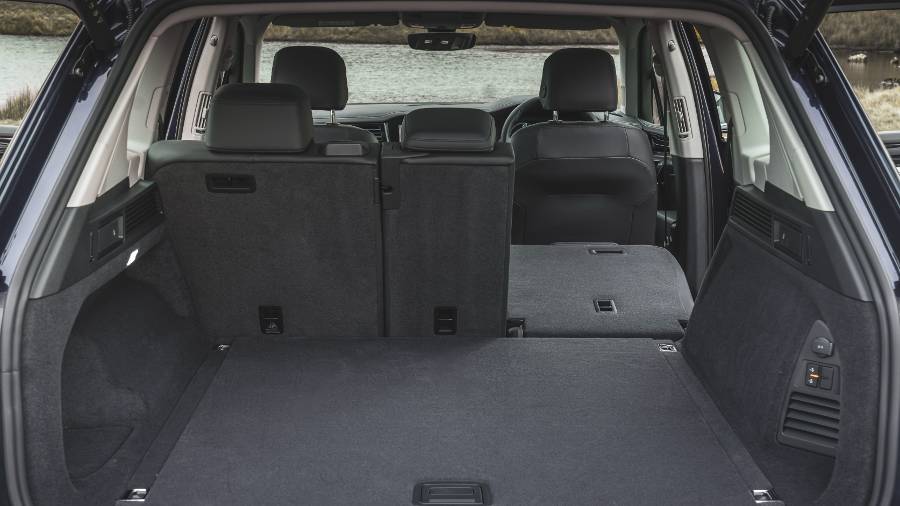
Safety
The updated Touareg has not yet been crash-tested by Euro NCAP, but as it’s structurally identical to its predecessor, the independent adjudicator likely sees no reason to test it again. And anyway, the Touareg got a maximum five-star rating when it was put through Euro NCAP’s rigorous testing procedure, achieving solid scores across the board.
Hopefully, though, the flotilla of safety assistance features fitted to or available on the Touareg should help drivers avoid trying out the car’s crashworthiness. Even the basic Touareg Elegance comes with Isofix child seat mounting points in the back, adaptive cruise control that maintains a safe distance to the car in front, and a lane-keeping assistance system to help prevent the car wandering out of its lane. Autonomous emergency braking tech is also there to stop the car if the driver doesn’t respond to a hazard, and there are parking sensors at the front and rear to help prevent low-speed parking bumps.
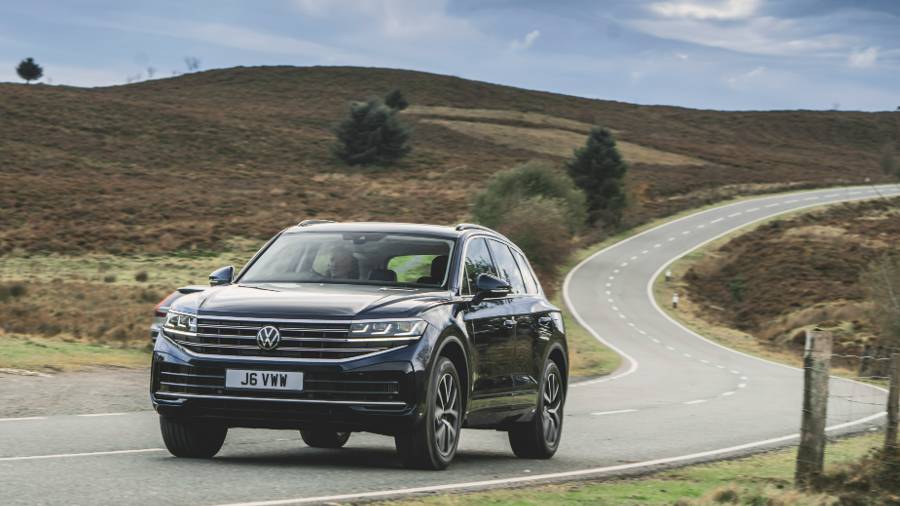
Options
Touareg customers get a choice of three trim levels, but choosing between them will be as much about picking your engine of choice as it will be about equipment. The Elegance model is available solely in 381hp plug-in hybrid form, but it comes with 20-inch alloy wheels, leather upholstery and four-zone climate control, as well as the digital instrument display, 15-inch touchscreen and heated front seats. A rear-view camera is thrown in, too, along with a panoramic sliding sunroof.
In short, the Elegance gets everything you need, but the Black Edition – offered solely in diesel and petrol forms – gets larger 21-inch black alloys, black body styling and tinted rear glass, as well as a 360-degree Area View camera, as well as all the Elegance kit.
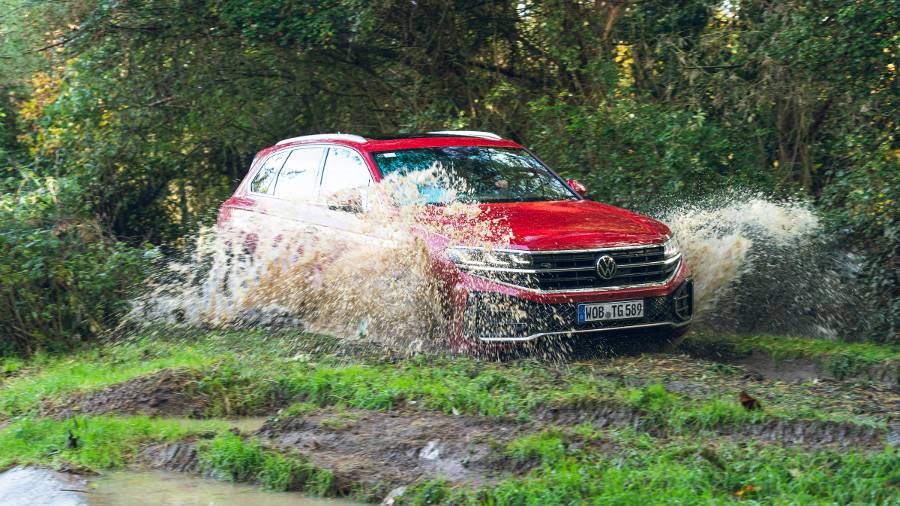
Finally, the high-performance R is only offered in 462hp hybrid form, and that gets even larger alloy wheels, some R styling tweaks and some extra kit, including active ‘climate’ seats that can heat or ventilate depending on the temperature, and a selectable 30-colour ambient lighting system.
As far as options are concerned, the Touareg gets all the usual options, including a range of colours – the Meloe Blue Crystal and Chili Red options are our favourites – and wheel designs. Other useful options include a heated windscreen, which is a game-changer in winter, and cool night vision tech, as well as all-wheel steering and a head-up display, plus an Off Road Pack that provides a front underbody guard for off-roading. In short, options are plentiful.
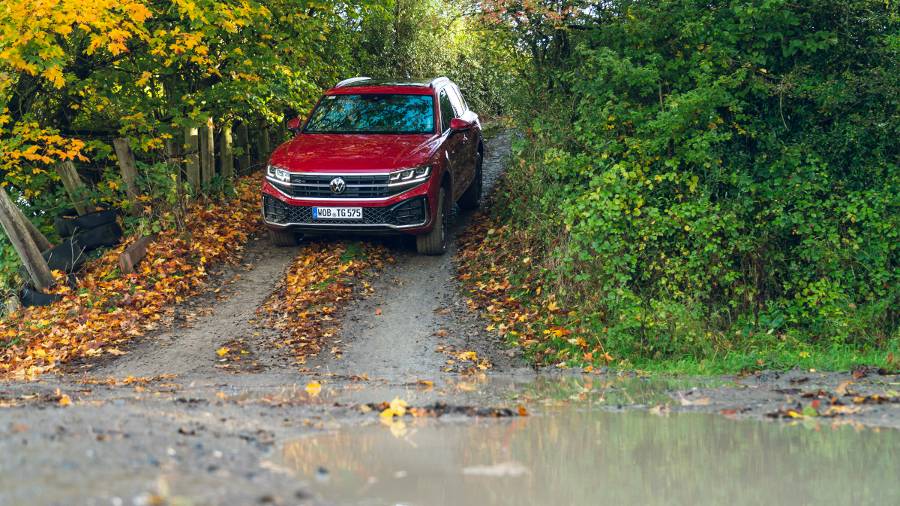
Rival Cars
Although there are differing opinions on whether a Volkswagen counts as a premium product, but the majority of the Touareg’s rivals are luxury vehicles.
Chief among these is the Audi Q7, which is actually quite closely related to the Touareg and shares engines and gearboxes with the big VW. But it showcases even better build quality in the cabin, and the tech is more effective, if not necessarily more modern.
Other key rivals include the BMW X5, which is a vastly superior car to drive, and the Range Rover Sport (below), about which you can say much the same thing. Customers could also consider the Volvo XC90, which is a beautifully styled thing, the Land Rover Discovery or the Toyota Land Cruiser, both of which major on off-road capability.
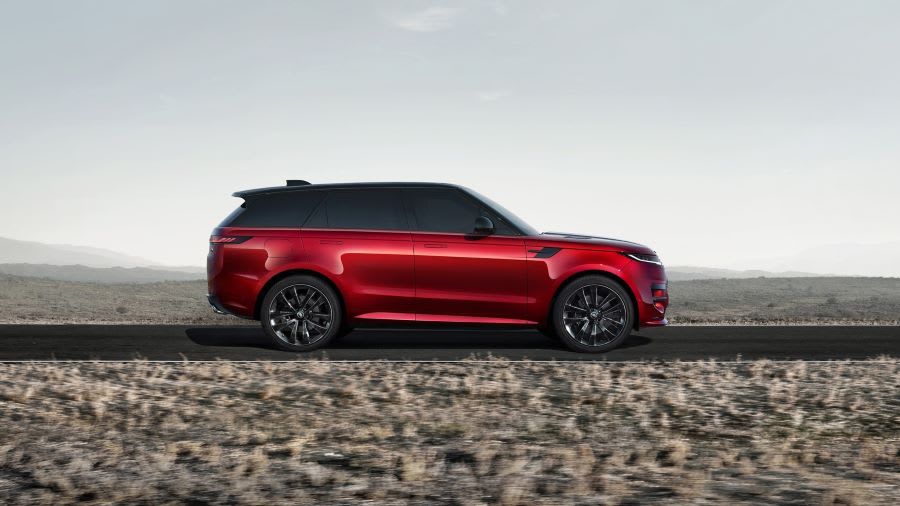
The Mercedes-Benz GLE is a strong contender, too, offering a stylish design and lots of technology, albeit with a considerably higher price. The Genesis GV80 counts as an alternative, too, and its glorious cabin stands in its favour, but thirsty petrol engine counts against it.
Speaking of Korean rivals, there are some more mainstream options in the shape of the Kia Sorento and theHyundai Santa Fe, and both feel more premium than their badges might suggest. Yet the VW has the slightly more upmarket badge, and though both the Kia and Hyundai products are likeable, the Touareg is a more successful bridge between the premium and mainstream markets.
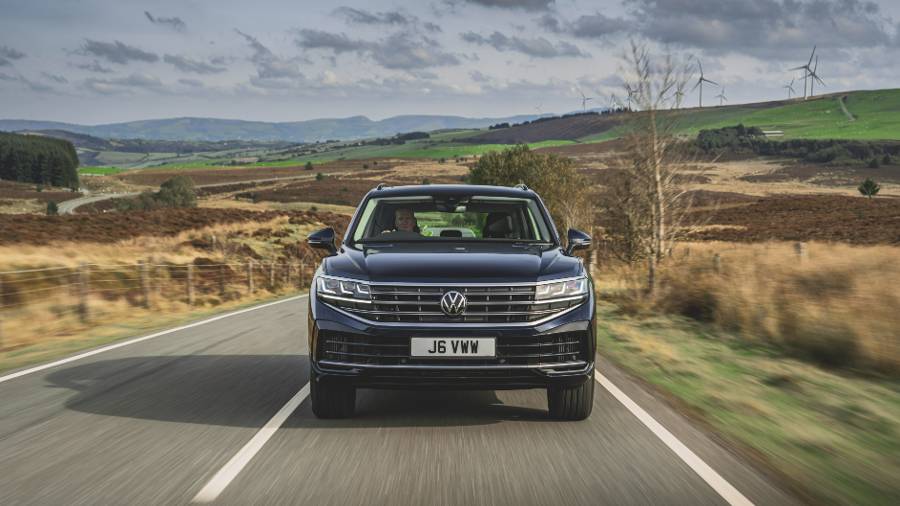
Verdict & Next Steps
The Touareg is by no means perfect, but it’s an incredibly solid option that has an appealingly baggage-free image. Nobody rails against VW drivers or gets too jealous, and that means the Touareg is quite a subtle, understated car for those who want luxury without the frills. But while it has a certain charm, it’s up against some brilliant SUVs from the likes of BMW, Audi and even Porsche, so it has its work cut out if it wants to grow its market share. Unfortunately, it just doesn’t quite feel special enough in any one area to be more than an alternative to the class leaders.
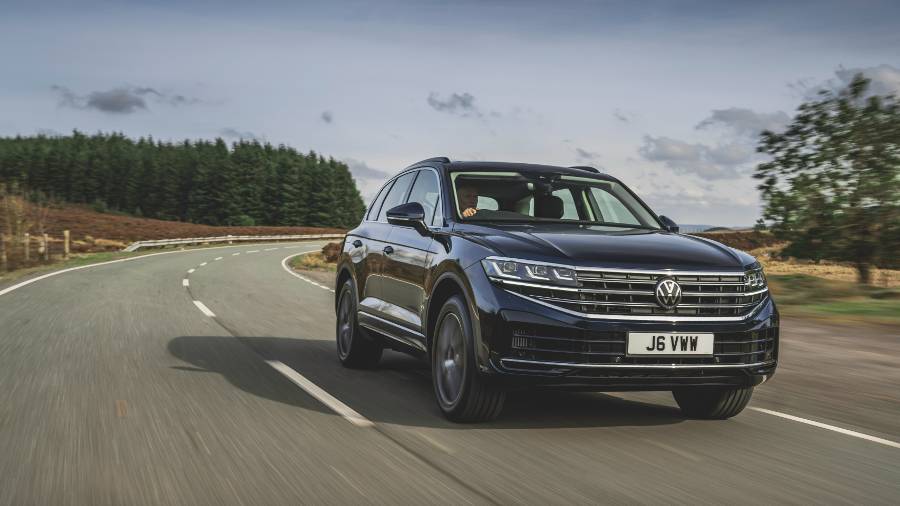
Where to next?
View latest VW Touareg lease deals - from just £561 per month inc VAT**.
Call us on 0118 3048 688 or hit the green 'Enquire' button for more details.
Looking for a great leasing deal? Check out our incredible range of Special Offers and Lease Deals.
New SUV? Read our latest Reviews and find the right model for you.
Want to know more about leasing? Take a look at our comprehensive Leasing Guides.
Interested in everything motoring? Why not catch up on all the latest Car Leasing News.
**Score based on Select’s unique meta score analysis, taking into account the UK’s top leading independent car website reviews of the VW Touareg
**Correct as of 08/04/2024. Based on 9 months initial payment, 5,000 miles annually, over a 48 month lease. Initial payment equivalent to 9 monthly payments, or £5,045.31 ( (Plus admin fee) Ts and Cs apply. Credit is subject to status.
